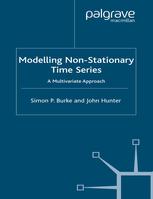

Most ebook files are in PDF format, so you can easily read them using various software such as Foxit Reader or directly on the Google Chrome browser.
Some ebook files are released by publishers in other formats such as .awz, .mobi, .epub, .fb2, etc. You may need to install specific software to read these formats on mobile/PC, such as Calibre.
Please read the tutorial at this link: https://ebookbell.com/faq
We offer FREE conversion to the popular formats you request; however, this may take some time. Therefore, right after payment, please email us, and we will try to provide the service as quickly as possible.
For some exceptional file formats or broken links (if any), please refrain from opening any disputes. Instead, email us first, and we will try to assist within a maximum of 6 hours.
EbookBell Team

0.0
0 reviewsCo-integration, equilibrium and equilibrium correction are key concepts in modern applications of econometrics to real world problems. This book provides direction and guidance to the now vast literature facing students and graduate economists. Econometric theory is linked to practical issues such as how to identify equilibrium relationships, how to deal with structural breaks associated with regime changes and what to do when variables are of different orders of integration.